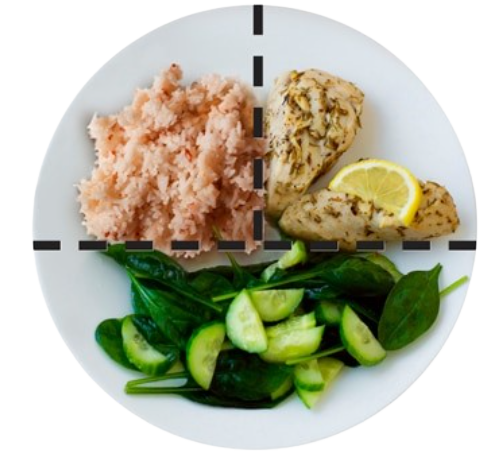-
Meters, Test Strips
and Lancing
-
Mobile
App
-
Other Products
and Accessories
-
OneTouch Verio® Control Solution

-
OneTouch Ultra Plus™ Control Solution

-
Carry Cases

-
Wellness
Partners
-
Learn

-
Customer
Support
Understanding how food affects your blood sugar

What you eat has a direct effect on your blood glucose (also known as blood sugar). An important part of managing diabetes is knowing what and how much to eat. Finding and following a meal plan that fits your lifestyle can help you manage your blood sugar.
Carbohydrates (carbs), proteins and fats are the three main nutrients in foods and needed by the body daily. People with diabetes can have a varied and delicious choice of foods. No foods are "forbidden" or "recommended" specifically but an understanding of food composition and nutritional basics really helps in making food choices that work best for keeping your glucose values in target range. Here are some helpful basics in building your nutritional plan, one that's best for your health and one that you enjoy.
Carbohydrates (carbs)
Carbs are the starches, sugar and fiber in foods such as grains, fruits, vegetables, milk products and sweets. The body breaks down carbs into sugars (glucose) to provide immediately usable energy. Some carbohydrates are digested rapidly into their building blocks, which are sugars and eventually glucose. Others are broken down more slowly depending on fiber content, what else is being consumed with them and other factors. Knowing what foods contain carbs and learning to estimate the number of carbs in a meal is helpful for blood sugar management and insulin calculations since insulin is required to regulate the entry of glucose into our bodies cells where it is used for energy (fuel). Choosing carbs from healthy sources like vegetables, fruits and whole grains (high fiber) is preferred over choosing less healthy carbs like foods or drinks with added sugars, fat and salt.
Proteins
Proteins are a necessary part of a balanced diet and can keep you from feeling hungry between meals. Proteins are broken down into amino acids and do not require insulin for metabolism. Protein itself does not have much of an effect on blood sugar levels, though the food the protein is in may. Many foods contain combinations of proteins, carbs, and fats.
Fats
Healthy fats are a necessary part of a balanced diet and a good source of energy, especially those from fatty fish, lean meats, some oils and nuts. Fats do not raise blood sugar but are higher in calories than protein or carbohydrates per gram and can make you feel full but also contribute to weight gain if ingested in excess.
It is important to include these 3 primary nutrients in your daily meals for nutritional balance. This will be easier if you build meals around a combination of protein, carbs, and healthy fats.
Making healthy food choices
Your dietitian or diabetes educator can help you develop an eating plan that is right for you and fits into your lifestyle and your palate. Healthy eating for diabetes can lead to healthy eating for the whole family.
Here are some guidelines for healthy eating:
- Work with your healthcare professional to help you learn to make healthy food choices and identify proper portion sizes.
- Eat a variety of nutrient-rich foods with each meal, including healthy fats, lean meats or proteins, whole grains and low-fat dairy.
- Choose fiber-rich foods, such as fruits, vegetables and whole grains (bran cereals, whole wheat pasta, brown rice) as often as possible.
- Try alternatives to meat, such as lentils, beans or tofu.
- Choose calorie-free liquids, such as unsweetened tea, coffee or water.
- Choose sugar substitutes in moderation.
- Choose lower-salt options for heart health.
Visualizing food portion size
Eating the right amount of food and choosing nutritious foods are essential to maintaining good glucose levels. To help manage your diabetes, having a good sense of portion size is an important skill to learn.
The National Institute of Diabetes and Digestive and Kidney Diseases suggests using this portion size guide. Half of the plate should be filled with non-starchy vegetables, 1/4 with a lean protein, and 1/4 with a carbohydrate, preferably high-fiber:

Sources:
National Institute of Diabetes and Digestive and Kidney Diseases (NIDDK). Diabetes Diet, Eating, & Physical Activity. Last accessed online May 13, 2022
Verywell Fit. Macronutrients 101. Last accessed online June 23, 2022
Verywell Health. How Much Protein Should A Person With Diabetes Eat? Last accessed online June 23, 2022
Mayo Clinic. Diabetes Diet: Create Your Healthy Eating Plan. Last accessed online June 23, 2022
Related articles
US-VRF-1900022








